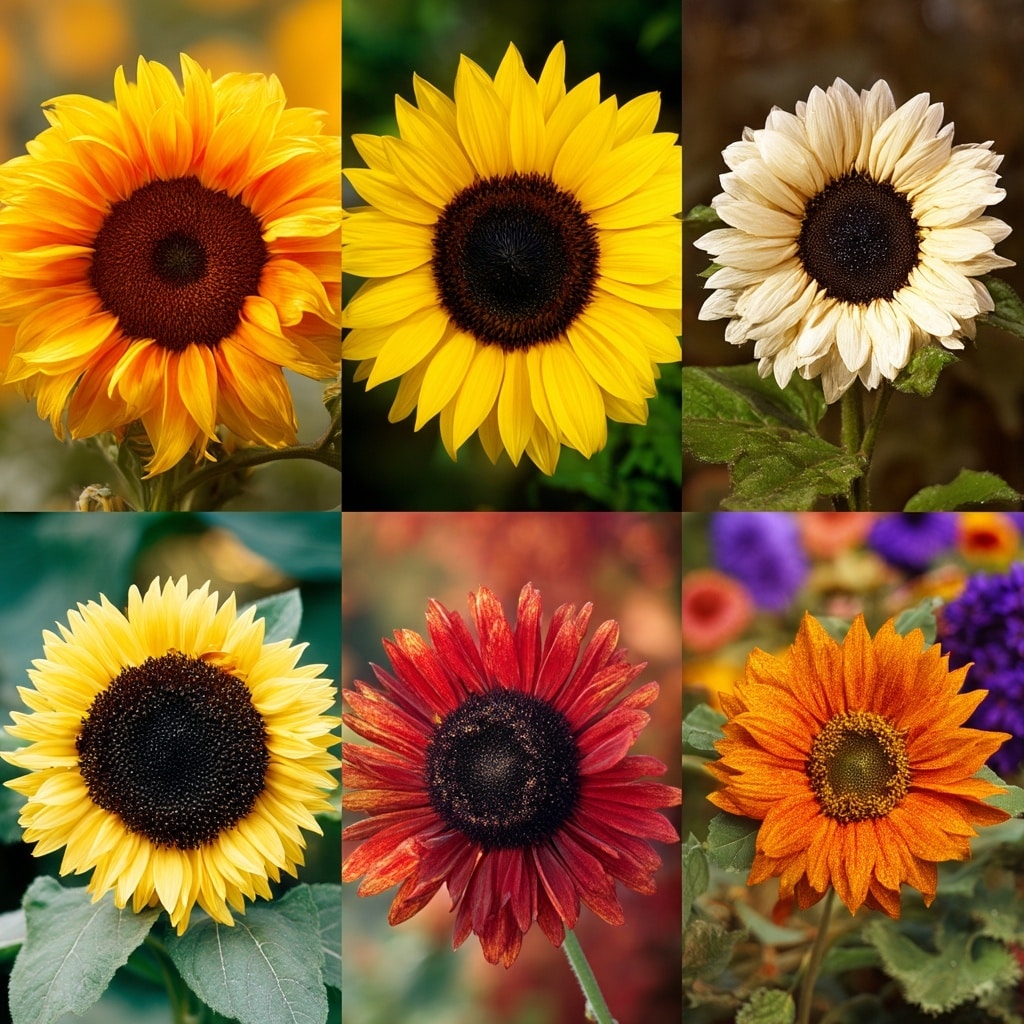Sunflowers are more than just cheerful blooms swaying in the summer breeze—they’re a gardener’s favorite for their bold beauty, ease of care, and pollinator-friendly charm. Whether you’re planting a row along your fence or brightening a backyard bed, understanding how to grow sunflowers in your garden can turn even a first-time gardener into a sunflower success story.
These sunny annuals thrive in warm weather and well-drained soil, stretching tall toward the sky with golden faces that follow the sun. From classic giants to compact varieties, sunflowers can bring months of color and life to your outdoor space—so long as you give them the care they need at every stage.
Table of Contents
Sunflower Care Basics
Sunflowers are low-maintenance by nature, but like any plant, they thrive best when given the right environment. Start with a location that gets at least six hours of direct sunlight each day—these blooms are sun lovers through and through. Choose a spot with good air circulation and well-drained soil to reduce the risk of root rot and fungal issues.
Weeds can compete with young sunflowers for nutrients and water, so keep the area around them tidy. Mulching is a smart way to hold in moisture while also keeping weeds in check. As they grow, some varieties may need protection from wind or support to prevent leaning or breakage.
If you’re planting in an area where wildlife is active, protect seedlings with row covers or mesh—especially during the first few weeks. Once your sunflowers reach about a foot tall, they’re usually strong enough to stand on their own.
Planting Guidelines

Timing is everything when it comes to planting sunflowers. Wait until all danger of frost has passed and the soil has warmed—ideally when nighttime temperatures are consistently above 50°F (10°C). This ensures strong germination and healthy early growth.
Sunflower seeds should be sown directly into the ground, as these plants don’t transplant well. Plant seeds 1 to 2 inches deep, leaving 6 inches between them. Once the seedlings sprout, thin the tallest varieties to 12–18 inches apart, allowing each plant plenty of space to reach its full height.
Choose a spot that offers wind protection, such as near a fence or wall, especially if you’re planting towering types. If you’re growing smaller varieties or sunflowers in containers, make sure the soil is loose and drains well.
For gardeners with short seasons, you can start seeds indoors 3–4 weeks before your last expected frost date. Just remember to harden them off before moving them outside.
Sunlight Requirements
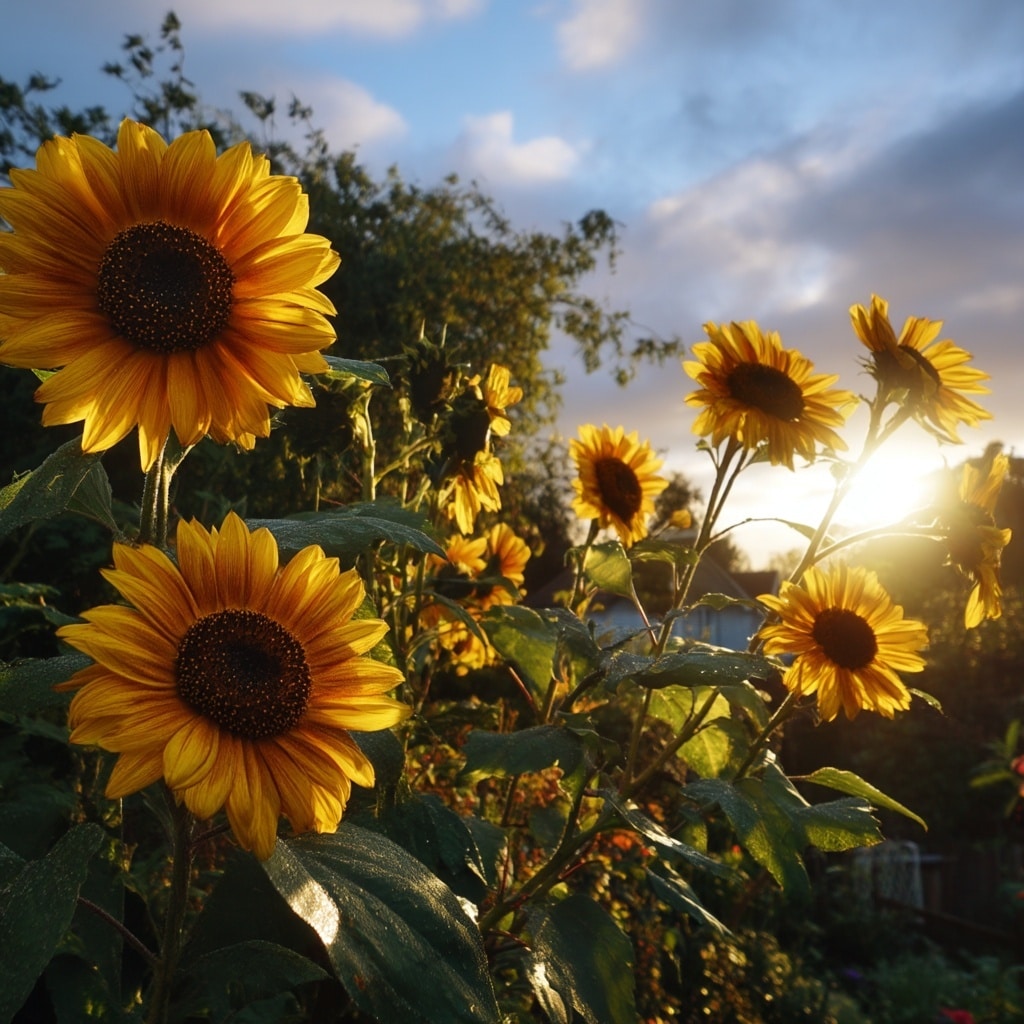
Sunflowers are true heliotropes—meaning their heads follow the sun—and that’s no coincidence. These plants need full sun exposure, ideally 6 to 8 hours of direct sunlight daily, to grow tall and produce strong blooms.
The more sunlight they get, the straighter and sturdier their stems will be. In low-light conditions, sunflowers may become leggy or droopy, and blooming will suffer. If you’re planting near structures or taller plants, make sure nothing shades your sunflowers during peak daylight hours.
Because their flower heads rotate to track the sun (especially in the early stages of growth), providing even lighting throughout the day helps ensure uniform development and better blooming. For best results, position them facing east so they catch the morning light and continue tracking from there.
Soil Preferences

While sunflowers aren’t picky about soil, the best results come from planting them in well-draining, nutrient-rich soil with plenty of organic matter. These tough plants can grow in poor or sandy soils, but for bigger blooms and stronger stems, a little soil preparation goes a long way.
Aim for a neutral to slightly acidic pH between 6.0 and 7.5. If your soil is clay-heavy or tends to retain water, consider adding compost, sand, or aged manure to improve drainage and aeration.
Because sunflowers develop deep taproots, loose soil allows roots to grow unimpeded. Before planting, loosen the soil to a depth of at least 12 inches. If you’re growing sunflowers in containers, choose a potting mix that’s light and drains quickly.
Avoid over-fertilizing with nitrogen-rich amendments, which can lead to lush foliage but fewer flowers. Balance is key—healthy soil supports vibrant blooms.
Watering Needs
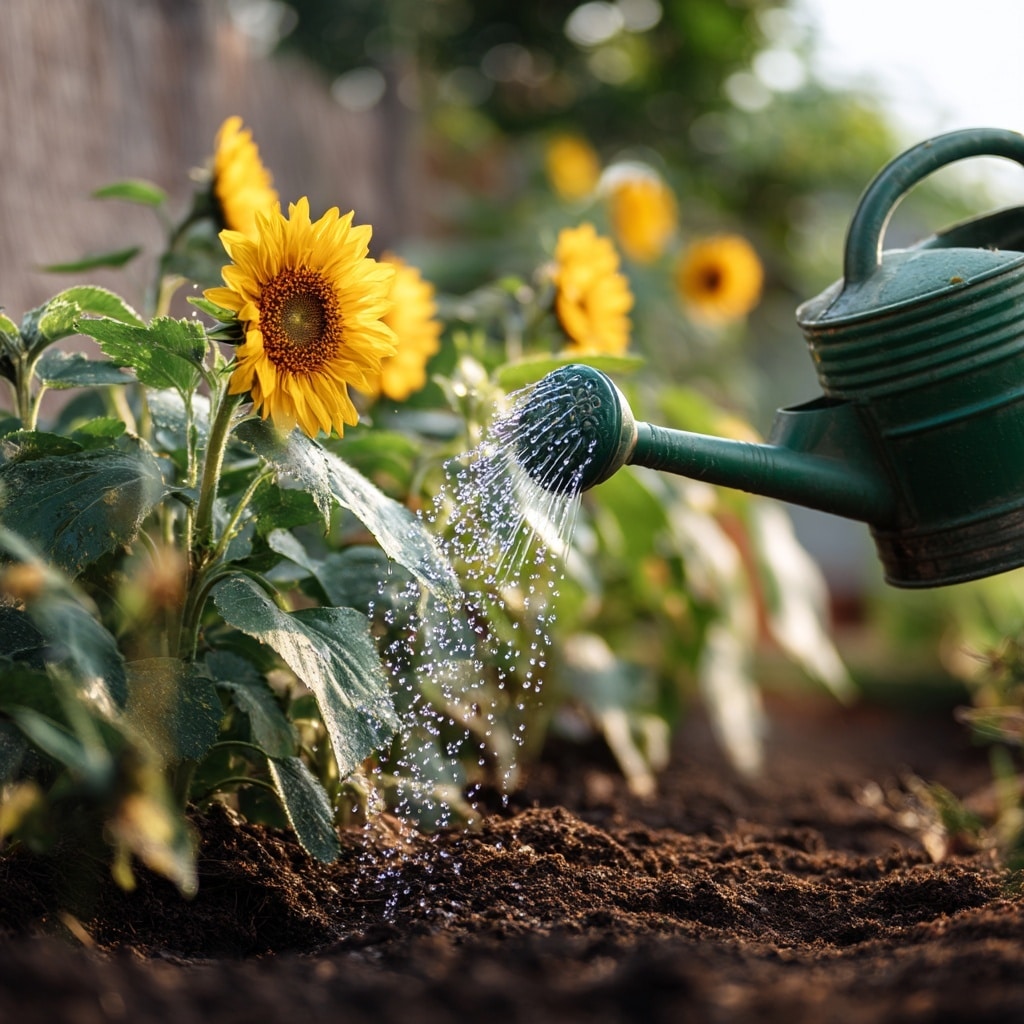
Although sunflowers are fairly drought-tolerant once established, consistent watering—especially during early growth and blooming—makes a noticeable difference in their health and flower production.
When seedlings are young, keep the soil evenly moist but not soggy. As the plants mature, they can tolerate dry periods, but prolonged drought will reduce blooming and may cause wilting. The ideal approach is to let the top 1–2 inches of soil dry out between waterings.
During hot or windy days, tall sunflowers may need extra watering, particularly in sandy soils that dry quickly. Container-grown sunflowers typically require more frequent watering, since pots dry out faster than ground soil.
To avoid fungal issues, water at the base of the plant in the early morning, giving the foliage time to dry throughout the day. Drooping leaves with dry soil beneath them are a clear sign your sunflowers are thirsty.
Temperature & Humidity
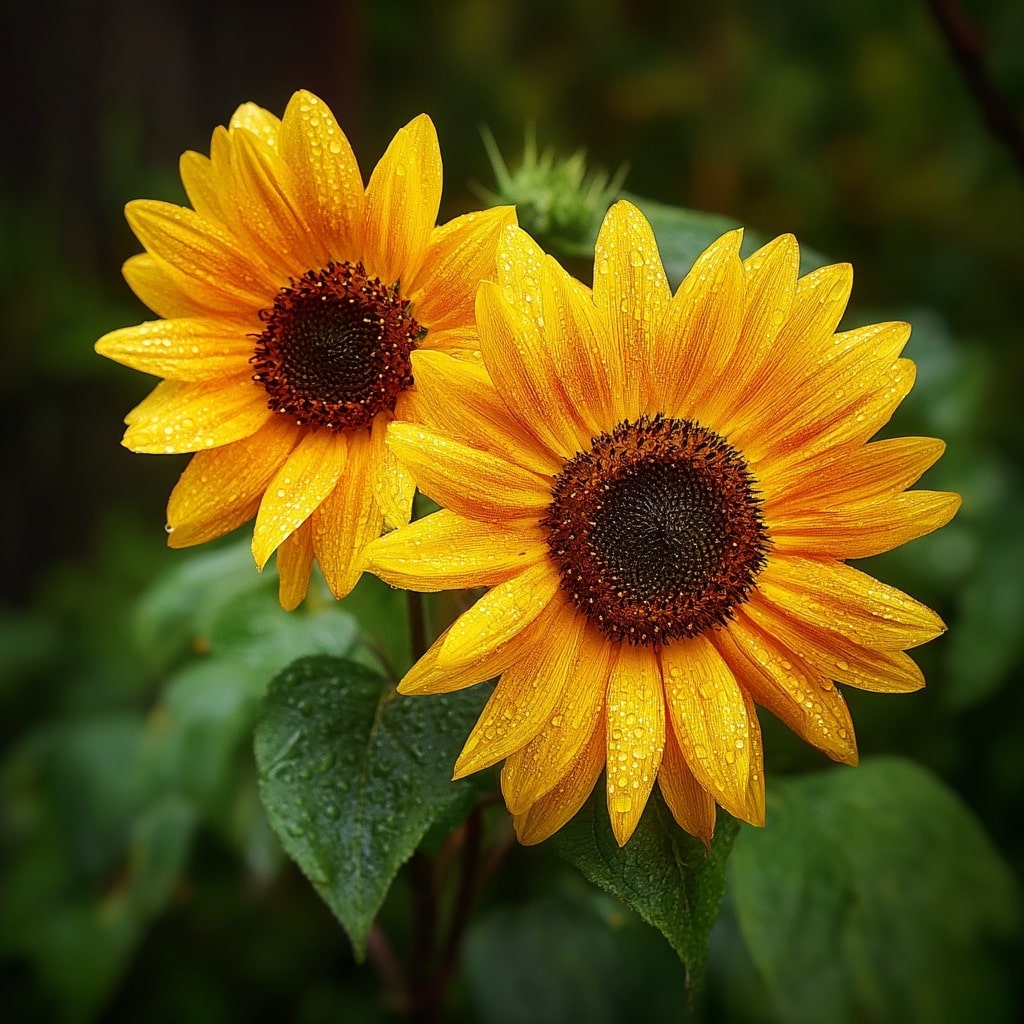
Sunflowers thrive in warm, sunny weather. The ideal temperature range for healthy growth is between 70°F and 78°F (21°C to 26°C). While they can handle high summer heat, consistent watering becomes crucial when temperatures soar.
These hardy annuals can also tolerate cooler conditions during early spring, provided there’s no frost. However, any extended cold snap or frost can damage seedlings or delay growth, so it’s best to plant only after the last frost date in your region.
As for humidity, sunflowers are adaptable. They grow well in both dry and moderately humid climates—as long as the soil is well-drained and there’s good air circulation around the plants. Poor ventilation in humid conditions can lead to fungal issues like mildew and rot, especially when plants are crowded or overwatered.
To prevent moisture-related diseases, space sunflowers appropriately and avoid wetting the foliage during irrigation.
Fertilizing Tips

Sunflowers aren’t heavy feeders, but a little nutrient support can encourage taller growth and more vibrant blooms—especially in poor or depleted soil.
Before planting, work some compost or well-rotted manure into the soil to give your sunflowers a healthy head start. If your soil is already rich and loamy, you may not need additional fertilizer at all.
For those growing in leaner soil, apply a balanced, slow-release fertilizer in early spring. Once the plants are actively growing, switch to a fertilizer higher in phosphorus and potassium—these nutrients support blooming and strong root development. Avoid overdoing nitrogen, as it leads to tall plants with lots of leaves but fewer flowers.
In containers, where nutrients wash out more quickly, feed sunflowers every 2 to 3 weeks with a diluted liquid fertilizer.
Tip: Always follow package directions and water after feeding to avoid burning the roots.
Staking & Support
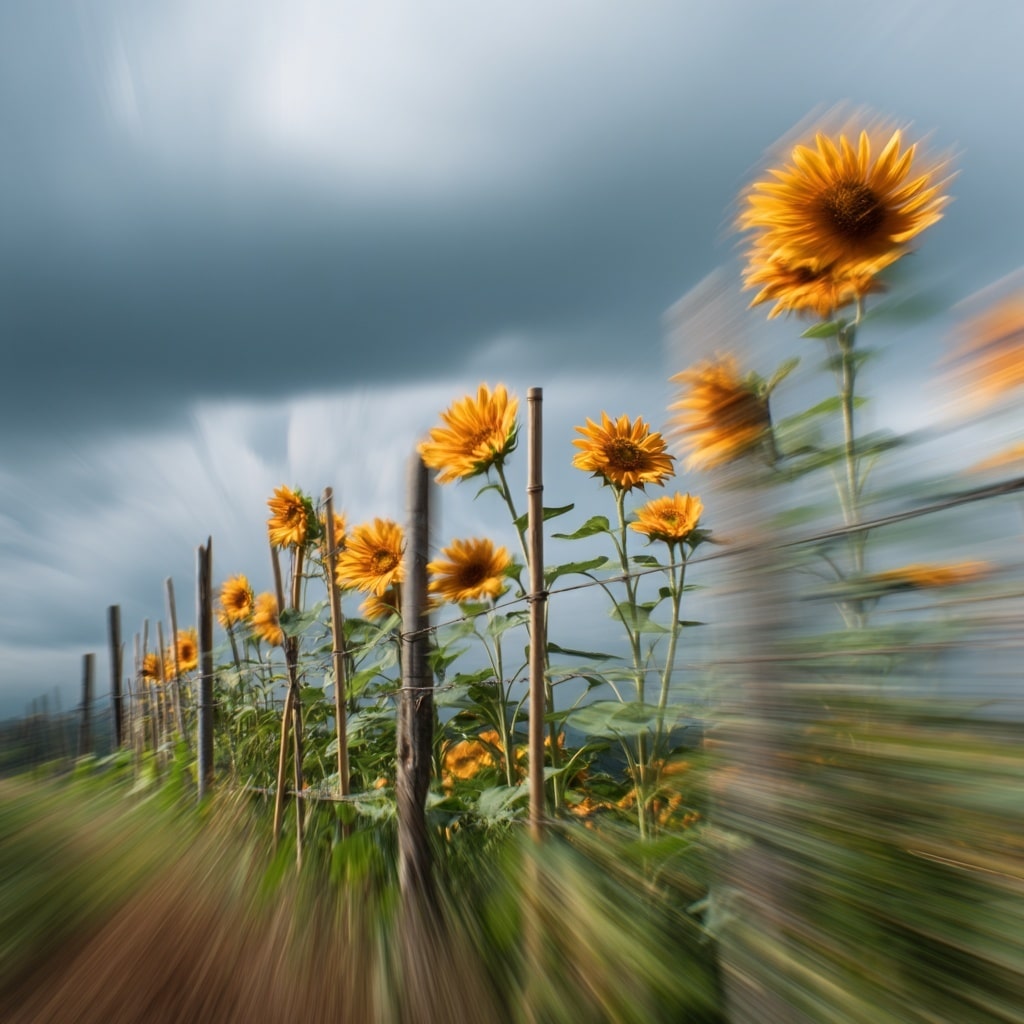
Tall sunflowers, especially the giant varieties, often need a little help staying upright—particularly in windy or rainy conditions. As they grow top-heavy with large flower heads, their stems can bend or break without proper support.
To prevent this, plant sunflowers in groups so they can support each other naturally. For added reinforcement, use stakes or cages—bamboo stakes are a sturdy, natural option that blend easily into the garden. Drive stakes into the ground a few inches away from the base to avoid disturbing the roots.
Gently tie the stem to the stake using soft garden twine or cloth strips. Avoid tight knots, which can damage the stem as it thickens.
Another smart method is to plant sunflowers along a fence, which provides natural support and acts as a windbreak. Smaller or dwarf varieties typically don’t need staking, but it’s always good to monitor their stability during storms or heavy rainfall.
Popular Sunflower Varieties
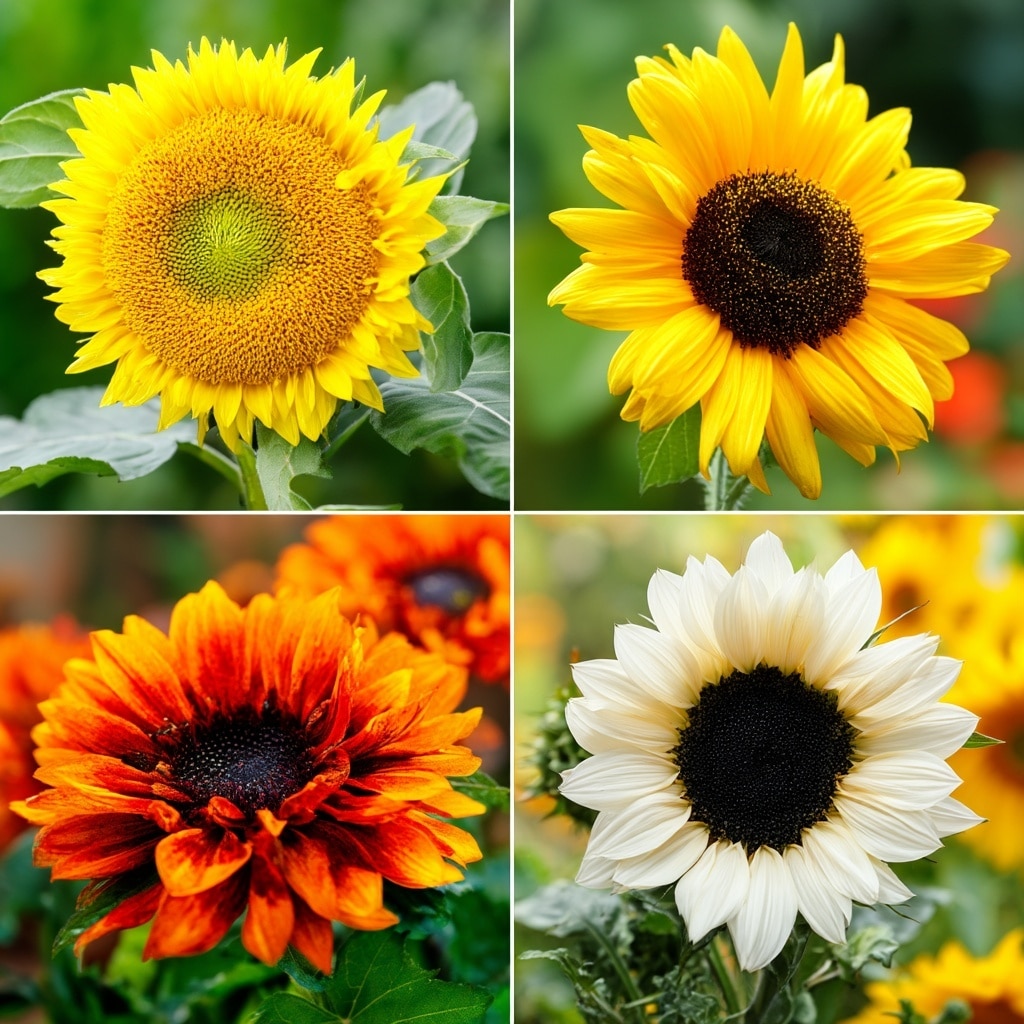
There’s more to sunflowers than the classic yellow giants we all know. Modern varieties come in a range of sizes, colors, and bloom types, making it easy to find the perfect fit for any garden.
Here are some standout sunflower types to consider:
‘Russian Giant’
- A towering favorite, reaching up to 12 feet tall.
- Classic yellow blooms with broad faces.
- Ideal for back borders or dramatic focal points.
‘Teddy Bear’
- A compact, bushy variety growing around 3 feet tall.
- Fluffy, double blooms that are soft to the touch.
- Great for containers or small spaces.
‘Giant Sungold’
- Reaches about 6 feet in height.
- Features large, shaggy, golden-yellow double blooms.
- Eye-catching and unique in any garden.
‘Autumn Mix’
- A colorful blend of red, orange, gold, and bronze flowers.
- Perfect for adding warm tones to late-summer beds.
‘Italian White’
- Grows up to 7 feet with creamy yellow petals and dark centers.
- Elegant and airy, ideal for cutting gardens.
Mixing varieties with different heights and colors can extend the blooming season and add dynamic layers to your garden.
Pruning Practices

Pruning isn’t essential for sunflowers, but in some situations, it can improve their appearance and productivity—especially if you’re growing them in clusters or aiming for a tidy look.
During the growing season, you can pinch or trim back side shoots on branching varieties to encourage a more compact shape and stronger central blooms. Removing spent flowers, known as deadheading, may also promote additional flowering on certain types, especially the multi-blooming or branching ones.
Once your sunflower begins to brown, droop, or dry out, it’s time to cut it back. At the end of the season, cut the plant down to the soil level, particularly if you don’t plan to harvest seeds. This helps prevent disease buildup and clears the space for next season’s planting.
Use clean, sharp pruners to avoid damaging the stalk, and always discard any diseased plant material away from your compost pile.
How to Propagate Sunflowers
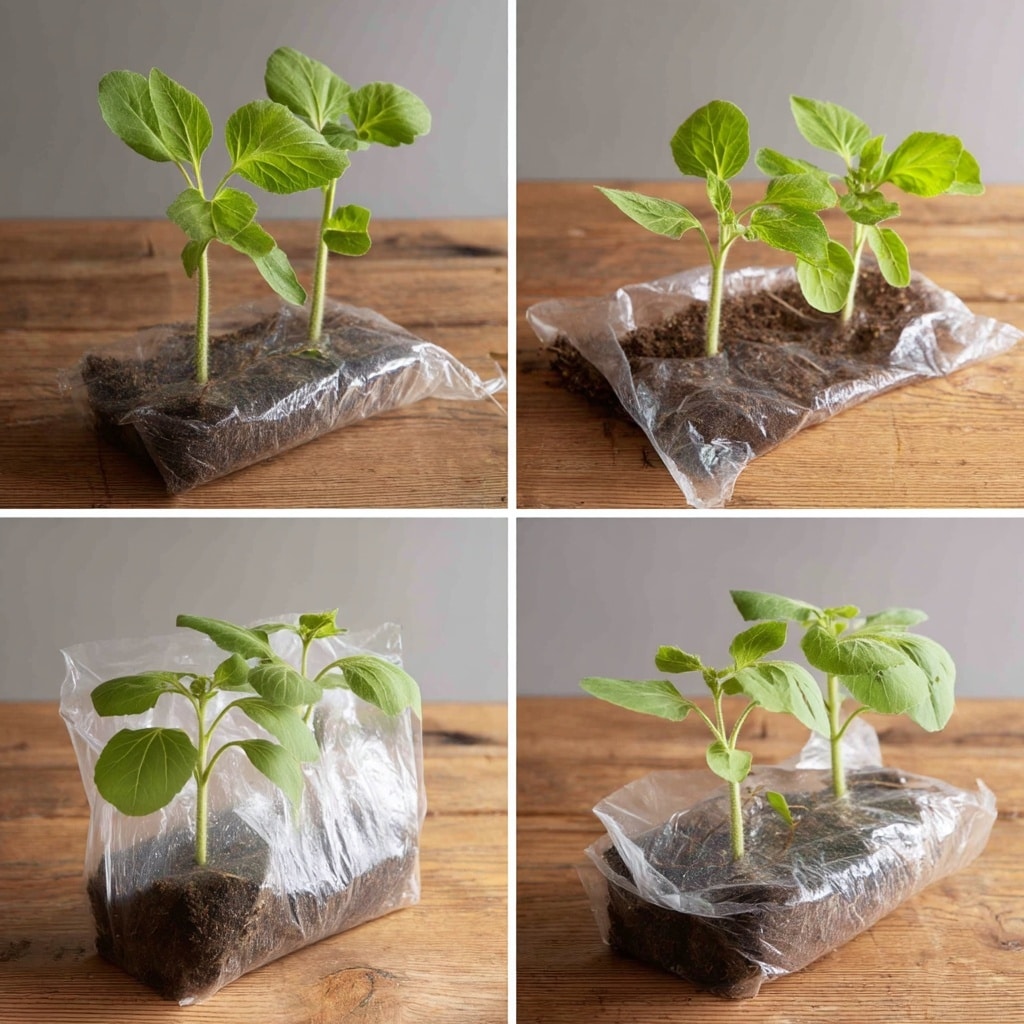
While sunflowers are most commonly grown from seed, they can also be propagated from stem cuttings—a method useful for maintaining specific traits or expanding your garden without buying more seeds.
Here’s how to propagate sunflowers from cuttings:
🌿 Step-by-Step Guide:
- Select a healthy stem: Choose a 4–6 inch non-flowering stem from a mature plant.
- Trim the cutting: Remove the lower leaves and snip just above a node, keeping 2 terminal leaves at the top.
- Apply rooting hormone (optional but recommended): Dip the cut end in powder or gel to boost root development.
- Plant in a moist medium: Use a mix of sand and peat moss for best drainage and moisture balance.
- Cover and maintain humidity: Place the cutting under a plastic bag or humidity dome in light shade.
- Monitor for root growth: In about 2–4 weeks, roots should develop. Once rooted, harden off before transplanting to full sun.
💡 Note:
While this method works, growing sunflowers from seed is generally easier and faster, especially for annual varieties like Helianthus annuus.
Growing Sunflowers From Seed
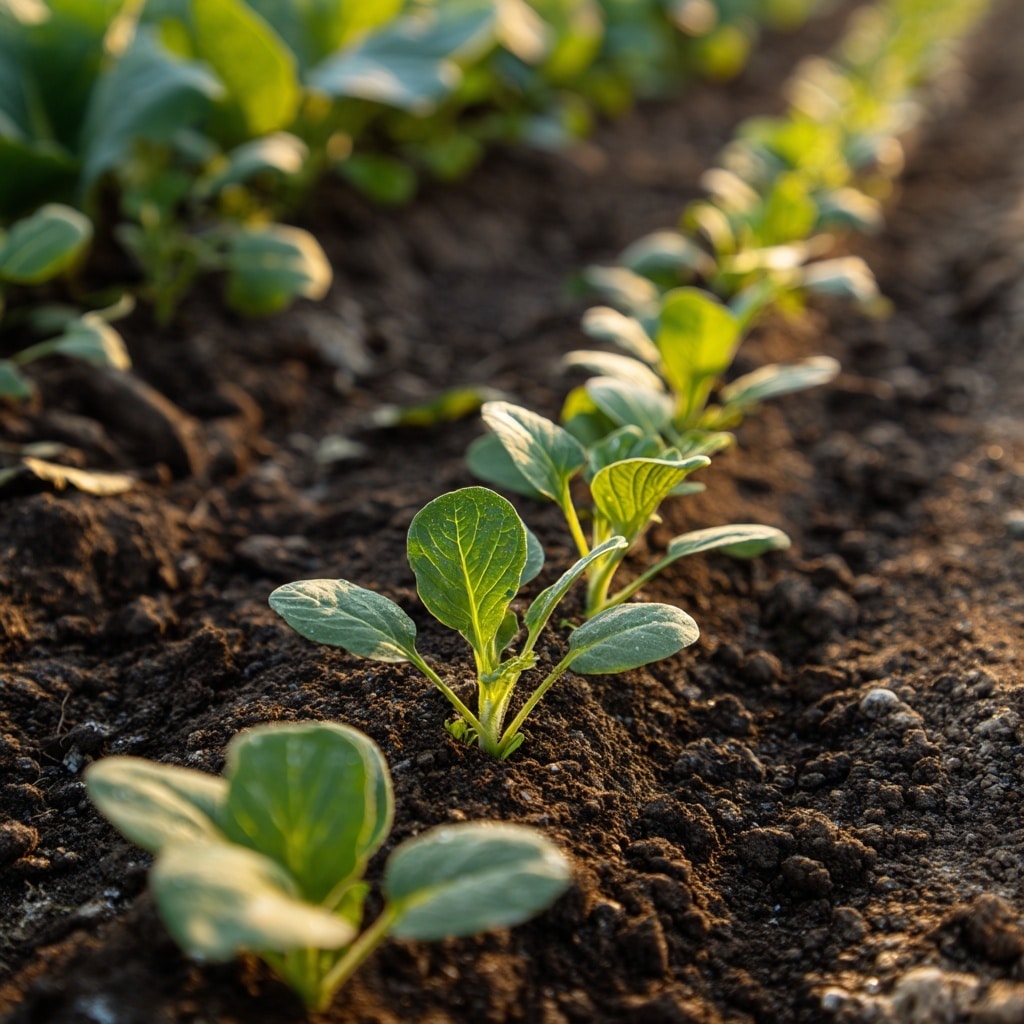
Growing sunflowers from seed is the most common and straightforward method—and part of the fun! Whether you’re starting indoors or sowing directly in the garden, the process is simple and rewarding.
🌱 Direct Sowing (Outdoors)
- Best time: After the last frost, when soil temperatures reach at least 50°F (10°C).
- Depth: Plant seeds 1 to 2 inches deep in loose soil.
- Spacing:
- Tall varieties: 12 to 18 inches apart
- Dwarf varieties: 8 to 12 inches apart
Keep the soil lightly moist until germination, which usually takes 7 to 10 days. Once seedlings are a few inches tall, thin them out to reduce crowding and improve airflow.
🪴 Starting Indoors
- Start seeds 3 to 4 weeks before the last frost in biodegradable pots.
- Keep them in a warm, sunny location or under grow lights.
- Harden off seedlings for a week before transplanting outdoors to prevent shock.
Whether planted in rows, clusters, or containers, sunflowers grow quickly from seed and begin blooming in 70 to 100 days, depending on the variety.
Harvesting Sunflower Seeds
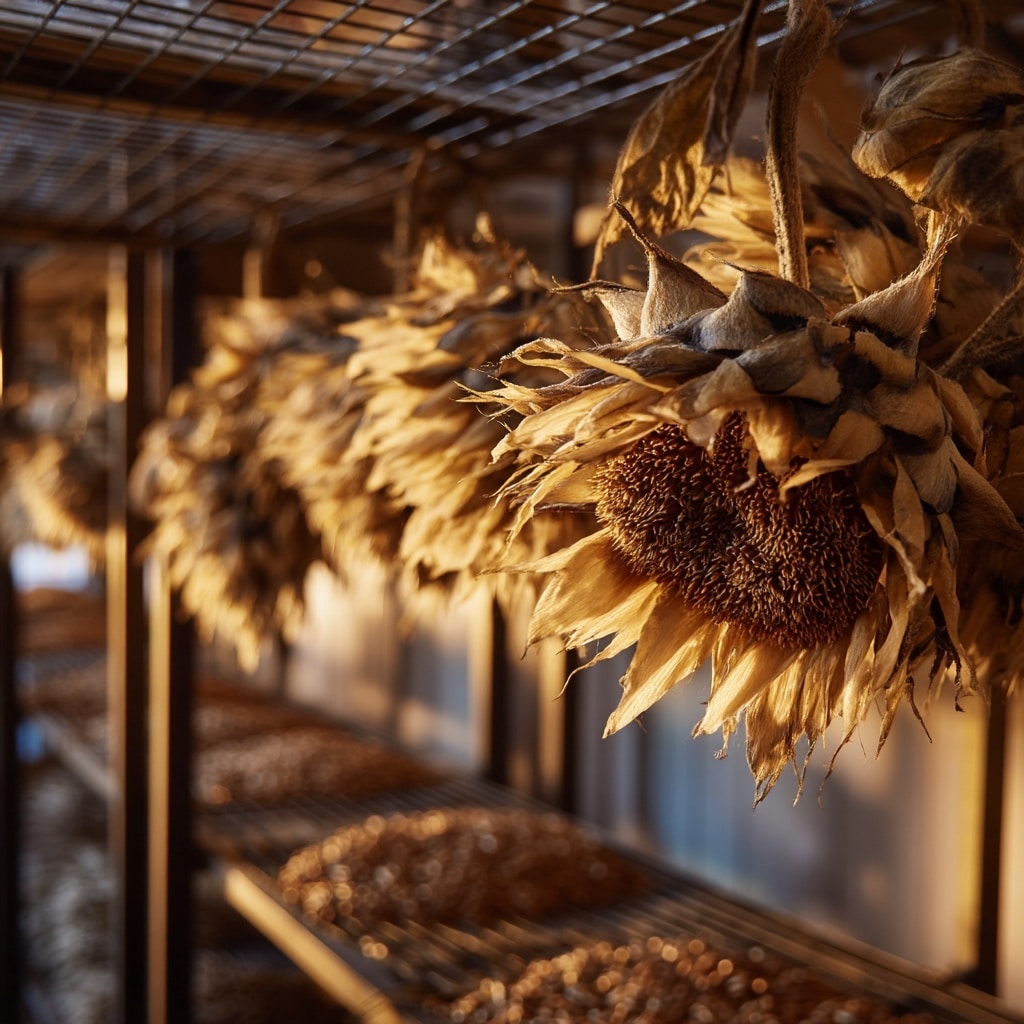
One of the most satisfying parts of growing sunflowers is harvesting their seeds—whether you want to replant, snack, or feed birds. Timing and technique are key to getting a clean, usable harvest.
🕒 When to Harvest
You’ll know it’s time when:
- The flower head droops and the back turns brown or yellow.
- Petals begin to fall off naturally.
- Seeds appear plump with dark stripes (depending on variety).
✂️ How to Harvest
- Cut the flower head with about 12 inches of stem attached.
- Hang it upside down in a warm, dry, ventilated spot, like a garage or shed.
- Cover the head with cheesecloth or a paper bag to catch loose seeds and keep pests out.
- Let it dry for 1–2 weeks, then rub the seeds out by hand or with a brush.
Store harvested seeds in a cool, dry container for replanting or roasting. If saving for next season, make sure they’re completely dry before storing to prevent mold.
Tip: Leave some heads on the plant if you want to attract birds—they’ll love the treat!
Potting & Repotting Sunflowers
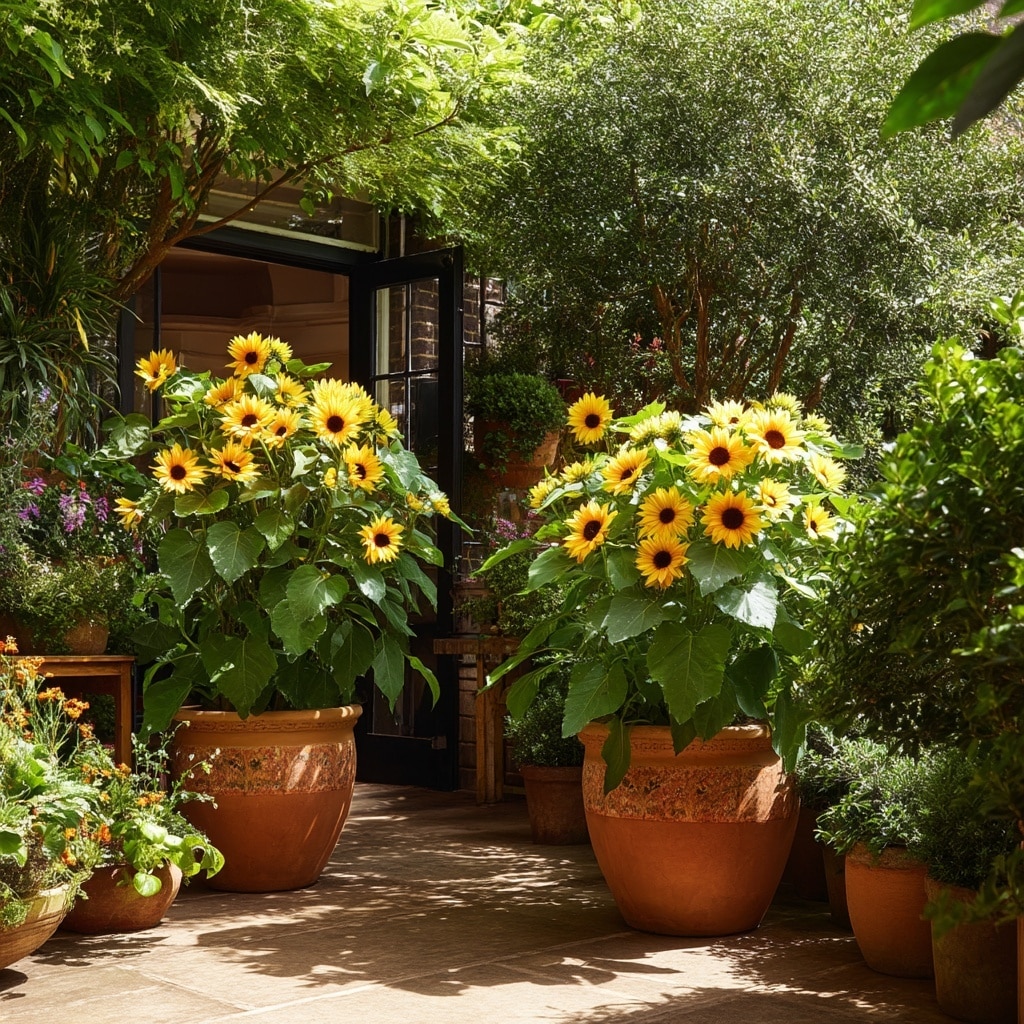
If you’re short on garden space or just love container gardening, sunflowers can thrive in pots—as long as you choose the right variety and container.
🪟 Choosing the Right Pot
- Go for containers that are at least 12 inches deep.
- Use a 7- to 10-gallon pot for larger varieties.
- Make sure the pot has drainage holes to prevent soggy roots.
🌱 Potting Tips
- Use a light, well-draining potting mix enriched with compost or organic matter.
- Plant dwarf varieties like Teddy Bear or Little Becka, which are compact and well-suited for pots.
- Place the container in a sunny spot, such as a patio, balcony, or windowsill.
Container sunflowers may need more frequent watering and feeding, as nutrients wash out quickly. Use a diluted liquid fertilizer every 2–3 weeks for best results.
🔁 Repotting?
Sunflowers are annuals and grow quickly. Most won’t need to be repotted once planted—but if you start them in smaller containers, transplant them to a larger one before they become root-bound.
Overwintering

Since sunflowers are annuals—specifically Helianthus annuus—they complete their entire life cycle in one season. That means once temperatures dip and frost sets in, your sunflowers will naturally die off. There’s no need for overwintering.
🌱 What You Can Do Instead:
- Collect seeds from mature flower heads in late summer or early fall for next year’s planting.
- Clear out spent plants once they’re dry and brown to prevent pests and diseases from overwintering in the soil.
- Compost healthy plant material or discard anything showing signs of disease.
If you’d like continuous blooms season after season, make a note to start seeds indoors or sow directly in the garden again once spring returns.
Common Pests & Diseases

Although sunflowers are tough, they aren’t immune to pests and diseases. Knowing what to look for—and how to respond—can help you keep your plants healthy all season long.
🐞 Common Pests
- Birds & Rodents: They love sunflower seeds. Use netting or mesh covers over maturing flower heads to protect your harvest.
- Sunflower Moths: These insects lay eggs on the flower heads. Their larvae tunnel into seeds, leaving holes behind. Apply organic pesticides early in the bloom stage if needed.
- Beetles & Caterpillars: These pests chew on leaves and petals. Handpick when possible or use neem oil spray as a natural deterrent.
🍂 Common Diseases
- Powdery Mildew: A white, powdery coating on leaves. Improve air circulation and apply fungicide if needed.
- Rust: Appears as orange or brown pustules on leaves. Remove affected foliage and avoid overhead watering.
- Leaf Spot: Black or brown dots on leaves, often followed by yellowing. Try garlic spray or diluted apple cider vinegar as natural treatments. Severely affected plants may need removal.
🌬️ Prevention Tips
- Space plants properly for airflow.
- Water at the base to avoid wetting leaves.
- Rotate planting locations each year to reduce soil-borne issues.
How to Encourage More Blooms

To get the most out of your sunflowers, it’s important to support their blooming with the right care at the right time. While most sunflowers bloom naturally during summer, a few key steps can extend their flowering period and improve bloom quality.
☀️ Give Them Full Sun
Sunflowers need 6–8 hours of direct sunlight daily. Limited light leads to weak stems and small, underdeveloped blooms.
💧 Water Consistently
Regular watering, especially during dry spells, ensures sunflowers don’t become stressed. Drought can cause flower heads to form too early or stop growing altogether.
🧼 Keep Plants Clean
Remove spent blooms on branching varieties to encourage continued flowering. Clean up fallen petals and leaves to deter pests and disease.
🌿 Use Proper Fertilizer
Feed sunflowers with a phosphorus-rich fertilizer during the early budding stage to stimulate strong blooms. Avoid excess nitrogen, which fuels leafy growth instead of flowers.
💨 Protect From Wind
Strong gusts can bend or snap stems, preventing flowers from fully developing. Use stakes or grow near fences for support, especially for tall cultivars.
Handle blooms gently if you’re cutting them for vases, and harvest early in the morning when heads are firm and hydrated.
Common Problems With Sunflowers
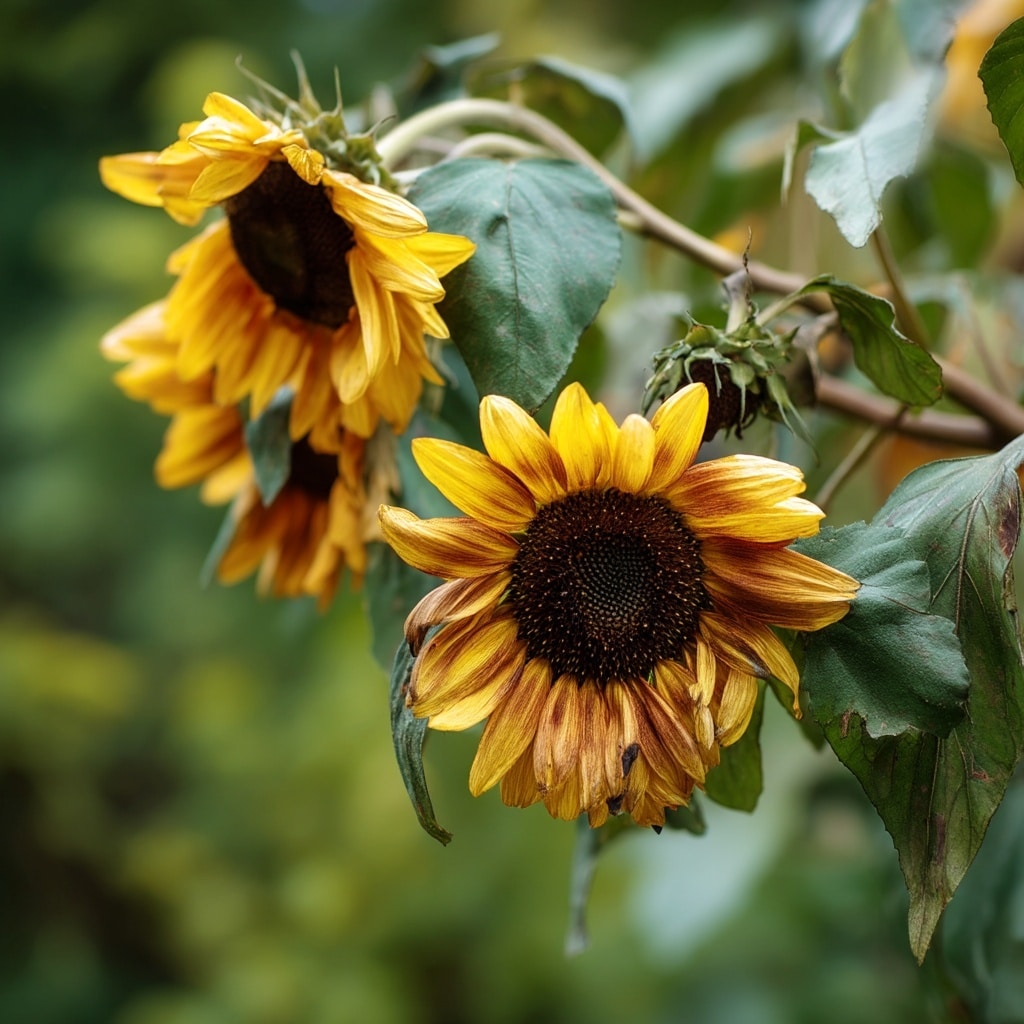
Even with proper care, sunflowers can run into a few issues—most of which are easy to spot and fix if caught early. Here are the most frequent problems gardeners face and how to deal with them.
🟤 Discoloration (Stem Canker)
Brown or black sores on stems and leaves often signal stem canker, a fungal disease that thrives in humid conditions. It can spread quickly and kill the plant if untreated.
Solution: Apply a broad-spectrum fungicide at the first sign of infection. If the condition worsens, remove and discard the affected plant to protect the rest.
⚫ Leaf Spot
This shows up as dark spots on the leaves, followed by yellowing and dropping foliage. It’s usually caused by a fungus in wet or humid environments.
Solution: Spray with natural remedies like diluted apple cider vinegar or garlic spray. If those don’t work, consider removing the infected leaves or entire plant.
🌱 Stunted Growth
If your sunflower seems small or weak, it could be due to poor soil, low sunlight, overcrowding, or insufficient water.
Solution: Ensure the plant has plenty of space, sun, and moisture. Enrich the soil if it’s lacking organic matter.
💧 Wilting
Wilting can be caused by underwatering, root rot, or heat stress.
Solution: Check the soil moisture. If it’s dry, water deeply. If it’s soggy, improve drainage or reduce watering frequency.
FAQs About Growing Sunflowers

🌻 Do sunflowers come back every year?
Most commonly grown sunflowers (Helianthus annuus) are annuals. This means they complete their life cycle in one season and will not return the following year. However, if you let the heads dry and seeds fall naturally, you may get surprise seedlings in spring.
🌻 How long does it take for sunflowers to bloom?
From seed to flower, sunflowers typically bloom in 70 to 100 days, depending on the variety and growing conditions.
🌻 Can I get multiple blooms from one plant?
Yes, but only on branching sunflower varieties. These types produce multiple smaller blooms over several weeks. Single-stem varieties bloom once and then fade.
🌻 When should I harvest sunflower seeds?
Wait until the flower head droops, the back turns brown, and the seeds look plump and mature. Cut the head and dry it before removing the seeds.
🌻 How do I know if my sunflower needs water?
Check the top inch of soil. If it’s dry and the leaves appear droopy, it’s time to water. Sunflowers are resilient, but they perform best with consistent moisture.
Conclusion
Growing sunflowers is one of the most rewarding—and surprisingly simple—ways to brighten up any garden. Whether you’re cultivating towering giants or charming dwarfs, these sun-loving blooms bring beauty, pollinators, and even seed snacks to your outdoor space. With a little care, the right location, and attention to watering and spacing, your sunflowers will stand tall and strong all season long.
For more tips on planting vegetables, companion flowers, and organic gardening methods, be sure to check out the other guides on your site.


